Choice and use of limestone

The limestone is very diverse, and the natural flagstone in landscape design deserves attention. It is necessary to clearly understand what it is, where and how it is used, how the beds of stone-flagstone look like. Another current nuance is the difference between tumbling and granite products, other types of limestone.
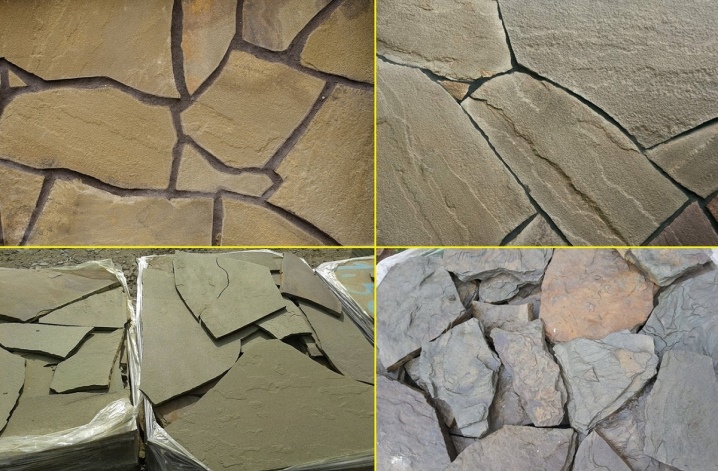
What it is?
Slab is a type of sedimentary rock... In nature, its appearance is associated with squeezing by the overlying layers. Extraction is carried out in open pits due to spalling from the edge of the deposits. Externally, the limestone represents slabs, there are slabs with both a smooth and a chipped edge. Given the variety of parent breeds, they can vary greatly:
-
relief;
-
coloring;
-
specific gravity;
-
thickness of individual specimens.
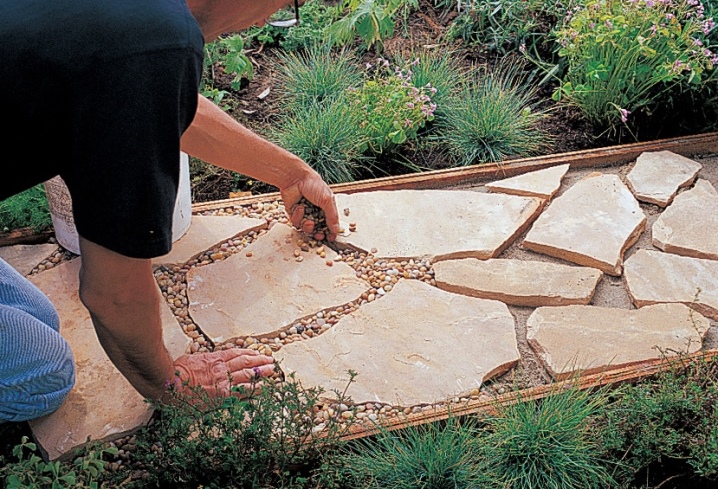
The limestone layer can be in different cases 20-150 mm. Of course the thinner the material, the lower the permissible load on it... It must be remembered that even the most durable flagstone is not as strong as granite or marble. However, it is easier to match with the exact shape, and the processing of edges is greatly simplified.
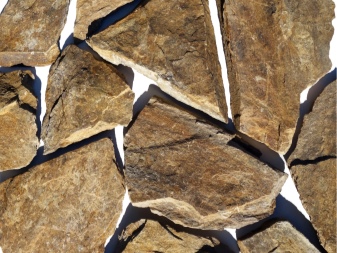
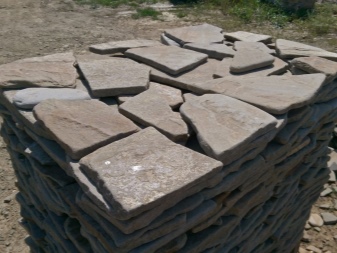
Attention: the brighter and more saturated the color, the more layers there are in such a plate, and the sooner it will begin to release crumbs.
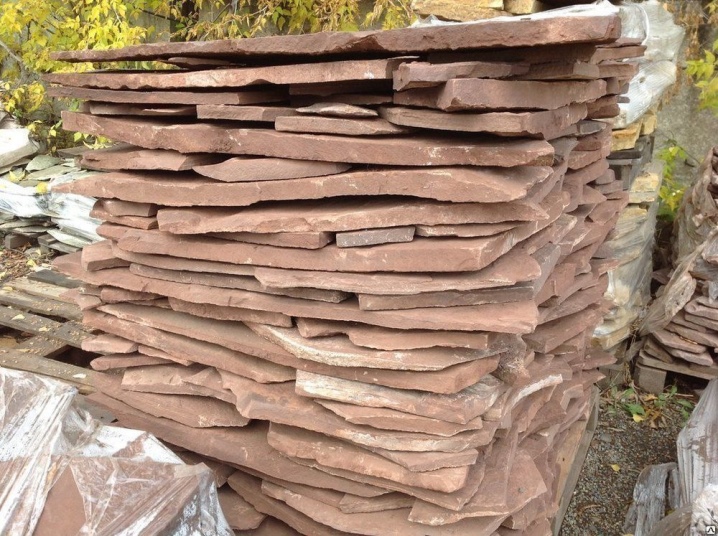
Where is it applied?
Slabs began to be used in the arrangement of outdoor areas and paths in gardens in the early years of the last century. And during this time, the positive reputation of the stone has received many confirmations. The board mass is light and resistant to heat... Various designs are willingly made from it in hot countries and in the southern regions of our country. There, limestone is also used for framing pools, in which other stones can heat up to significant temperatures.
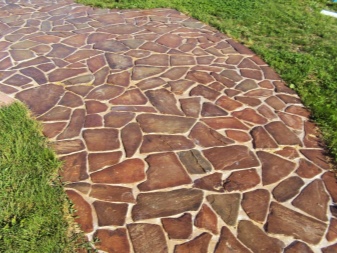

But nevertheless, it is worth considering not only the positive aspects of the breed (which also include a pleasant appearance), but also the negative ones:
-
porosity;
-
the likelihood of flaking due to moisture absorption;
-
difficulties with using near the irrigation zone;
-
the likelihood of individual tiles shifting as a result of heating and cooling cycles;
-
high damage from chlorinated water;
-
the formation of stains with wear;
-
the appearance of spots in highly moistened places;
-
the occurrence of contaminated areas near grills, barbecues, braziers and the like.
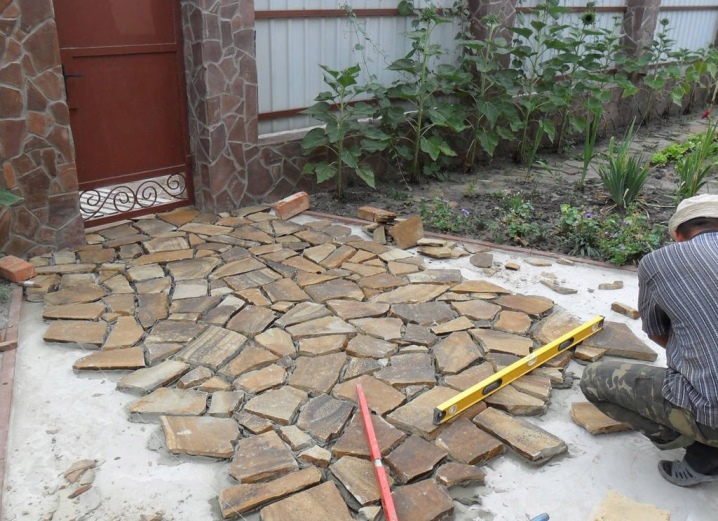
Quite often, flagstone is used for the facade of the house, including the basement. A similar solution is available in almost the same way as imitation stone. But it is required to comply with a number of installation standards.... Usually, the thickness of the material used does not exceed 5 cm. The masonry should be as solid as possible, because only this makes it possible to compensate for the negative impact of meteorological factors. The stone itself is usually chosen for the type of glue used, and not vice versa!
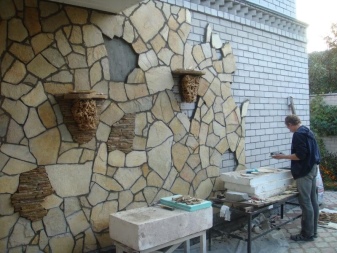
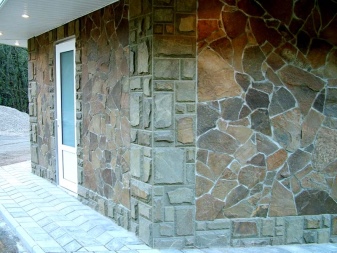
There are other areas of use for limestone: for example, it is often used for the foundation. In this case, they try to use blocks that are already thicker (up to 8 cm). The flagstone itself, however, acts here only as a frame.
The bulk is still made of ordinary concrete with wire or mesh reinforcement. The slabs are laid outside in layers, dividing them at the same distance that is usually observed when laying bricks.
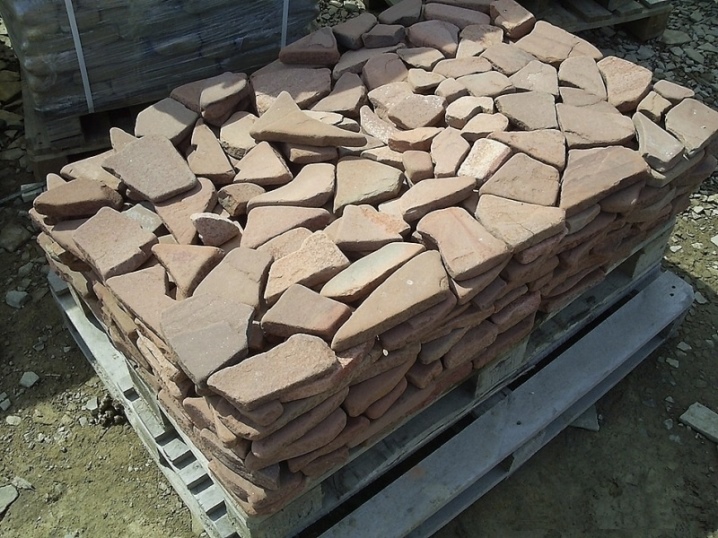
Having covered the basement with the same flagstone, you can get not only a beautiful, but moreover - a majestic view.It should be noted that this is a serious job that requires professional skills and strict calculation. Inattention to the definition of the load and errors in its assignment turn into very unpleasant consequences. The tile is suitable for cladding:
-
bricks;
-
reinforced concrete;
-
cellular concrete;
-
wood;
-
metal.
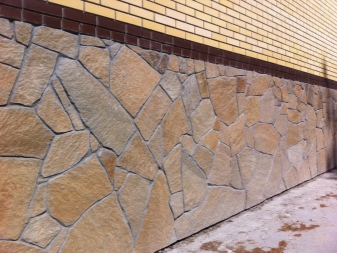
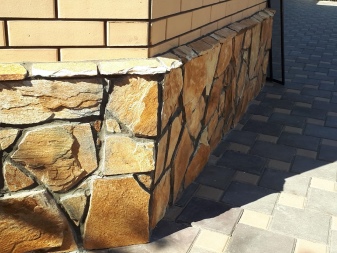
But this breed is also applicable in the construction of an arched vault, of course. The preparation of such structures is carried out using plywood templates. This technique allows you to almost avoid mistakes.

The bond with the backing masonry is most often provided with a basalt mesh. The work will take several days, but the aesthetic result is worth it.
You can also use flagstone for:
-
focus zones;
-
blind areas;
-
paving recreation areas;
-
finishing of premises inside the house;
-
facing the foundation of fences;
-
fireplace or stove coverings;
-
decoration of alpine slides and stone beds.
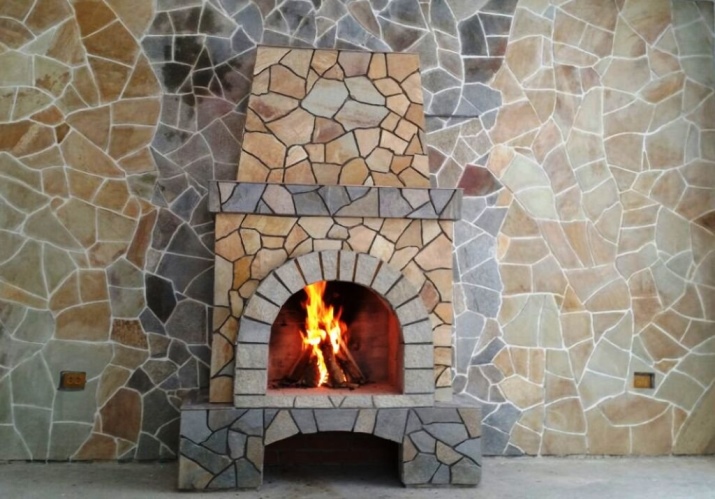
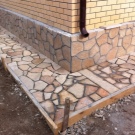
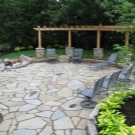
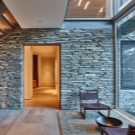


Types and their characteristics
Granite
This kind of natural materials is quite close to plain granite.... In some cases, it is also called granodiorite. It is worth noting that not all varieties of such a mineral are dense; stratification appears in many of them. It is necessary, when selecting such a stone, to require the presentation of certificates of compliance with sanitary rules and other standards related to radiation safety. The thickness of the material varies from 2 to 12 cm.
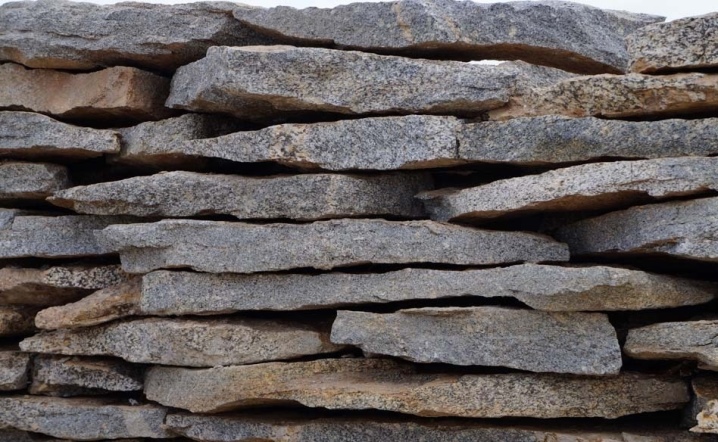
Sandstone
Natural sandstone in the form of slabs is reliable and durable. It steadily tolerates the impact of adverse natural and technological factors. It is an environmentally friendly material with a variety of colors. By default, such products are classified in the first class of materials. They can decorate ponds, paths, rock gardens, and plinths.
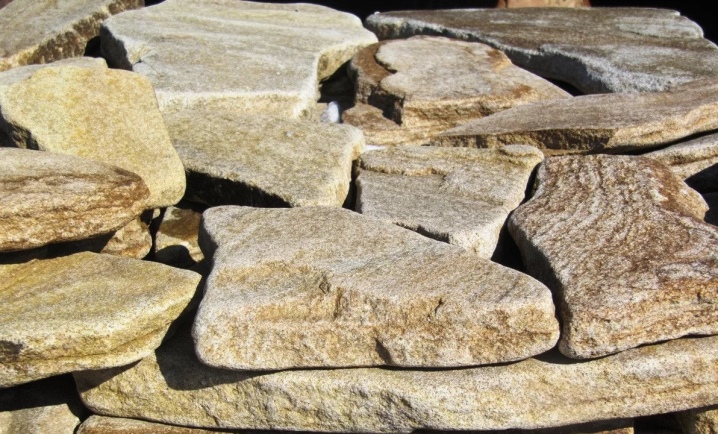
Slate
This type of limestone also boasts a significant number of color options. It is a dense and durable material. They can be used to revet and pave various surfaces. But there is also a minus - the likelihood of the appearance of heterogeneous areas. Varnishing helps to protect the surface from clogging and damage.
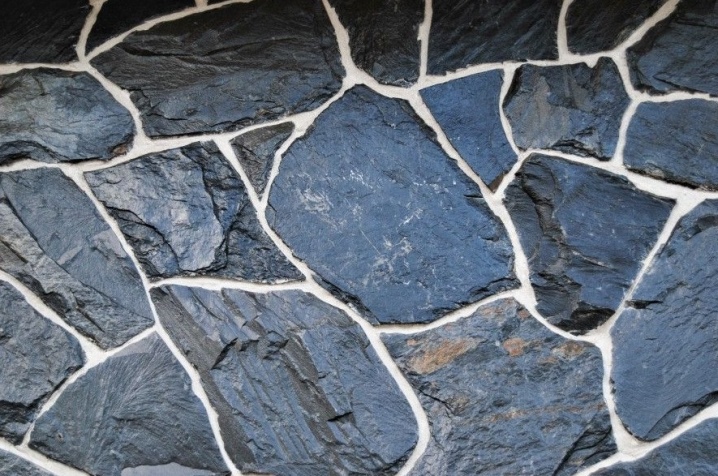
Zlatolite Is another common type. The name is no coincidence: it includes, albeit very modestly, gold and silver. Zlatolite is considered an exceptionally beautiful stone.
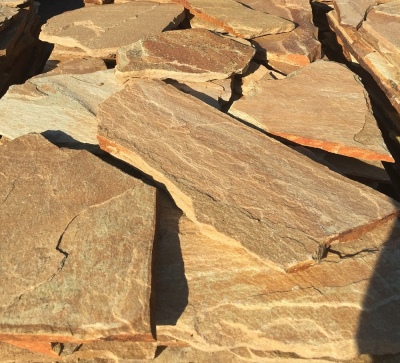
It can adjust the color in different cases according to the lighting. There are both light green and dark green notes (the latter is often called sericite).
Zlatolite can have by default:
-
blue;
-
yellow;
-
Red;
-
black colors.
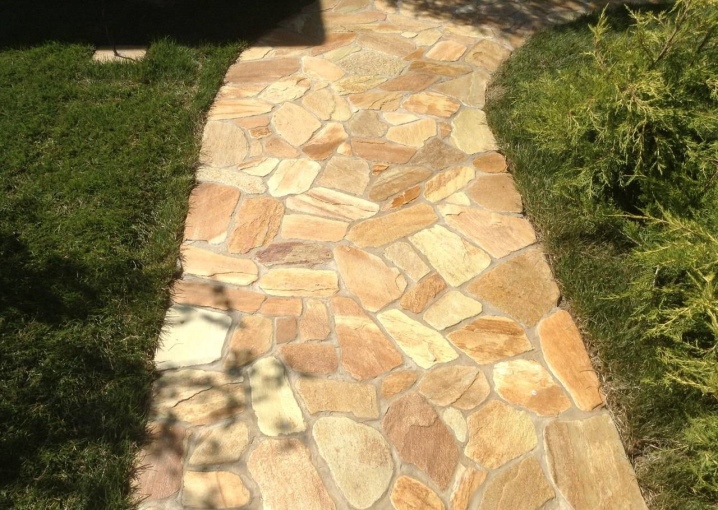
Zlatolite is easy to polish, and it can be sawn well. This material retains its strength when in continuous contact with water. Therefore, washing and cleaning it is much easier than other products. The rock is distinguished by antibacterial properties, and it is almost impossible to scratch it. Passing wheels or rubber shoes almost never leave dirt.
Similar properties allow using zlatolite for:
-
arrangement of swimming pools;
-
layouts of tracks and various sites;
-
preparation of decorative reservoirs;
-
construction of fountains and baths;
-
decorating walls, floors;
-
other works inside and outside houses.
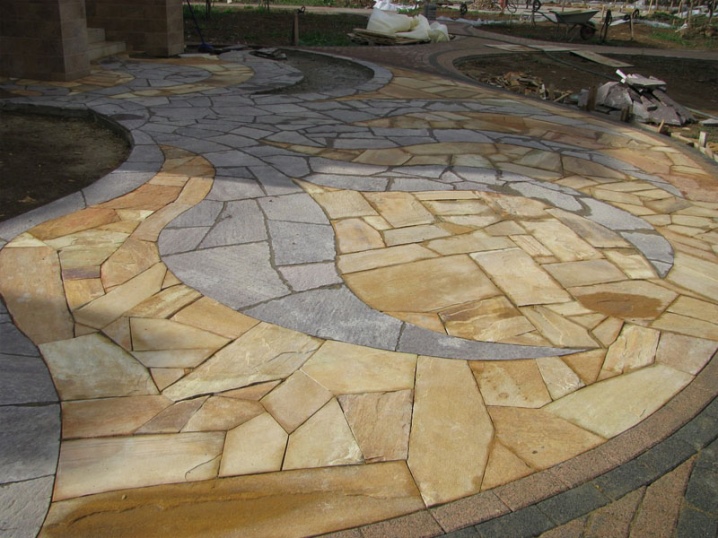
Zlatolite does not absorb radiation and industrial emissions. By nature, it has an even surface layer. The texture ideally corresponds to the modern design trends in the "antique" style. The average weight of 1 m2 is 51 kg. In terms of compressive strength, it surpasses even a number of types of granite. Taken together, this allows you to decorate living rooms, medical facilities, educational institutions.
White limestone is usually obtained in the Rostov region. But in other regions, stones of a different color are more often mined. First of all, we are talking about lemezite, which geologists officially call stromatolite marbled limestone. This breed is composed of fine grains.
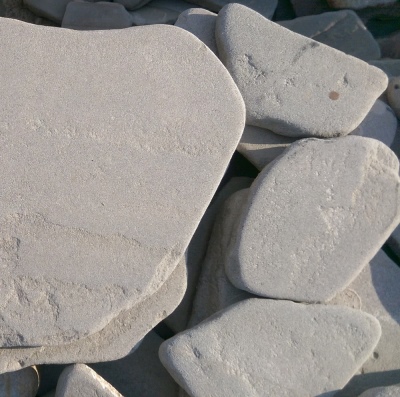
Lemezite can have:
-
burgundy brown;
-
pink;
-
gray green;
-
beige color.
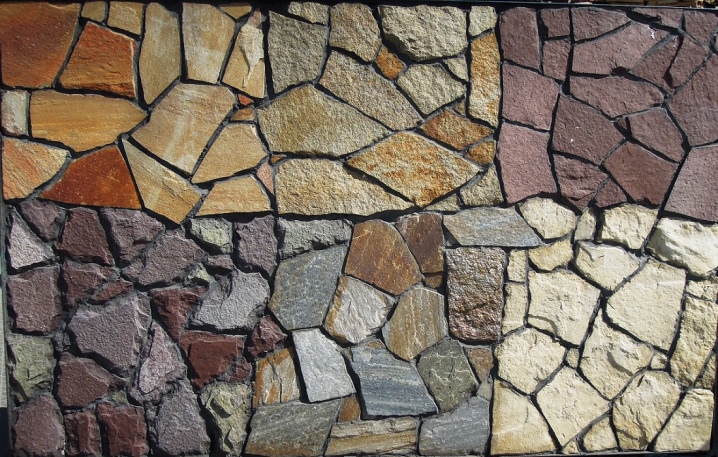
It was formed due to the fossilization of stromatolites (a special type of algae). The pattern of the breed is determined by how it is cut. In the transverse plane, a clear mottled surface is found, creating associations with the trunks of various plants. At the same time, “annual rings” of crimson, white and juicy brown shades alternate. The longitudinal section produces stripes, the arcs in the drawing have the same colors.
Lemezite is well polished and polished. After such processing, it becomes bright red, and the drawing brightens. The sizes of lemesite slabs are varied, the usual thickness is from 1.5 to 4.5 cm. The surface of the stone is uneven and bumpy, which is due to natural factors. Lemezite comes in chocolate, burgundy-raspberry and pure green colors.
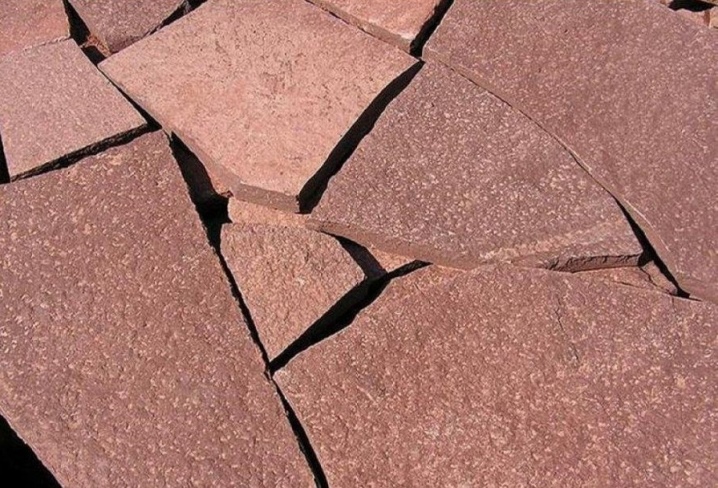
Sericite is considered a unique material for its decorative characteristics. He may have:
-
light gray;
-
dark gray;
-
brownish red;
-
almost black in color.

From such a mineral, mosaics, brilliant in variegation, are easily formed. Nevertheless, sericite is appreciated not only for this reason, but primarily due to its silvery sheen. On a sunny day, the surface sparkles. This effect is due to the dissemination of mica. Lemezite, sandstone and travertine are incapable of this.
Manufacturers
Flagstone "Rostovsky" purchased from the "Quarry of natural stone st. Vladimirovskaya ", for example. Also, a good product of this kind is mined and sent throughout the country by the company. Sandstone... Careers deserve attention too "Kamenkovo". If you need Uralsky material, then you can purchase tumbled and sawn material in the company "Alatyr-stone".

Other firms note:
-
"Stone quarries of the Urals";
-
Rzhevsky Granite Quarry;
-
"Zlatolite Uralsky";
-
"Brusyansky quarry";
-
"Assinsky quarry".
How to choose?
The most important point is the definition of color and texture. In this case, again, we must not forget about conformity of color and strength of the breed... A plain gray material has a gray color scheme. It is used for paving various surfaces. It is worth noting that the red material is not inferior to the gray variety in strength indicators, however, it is obtained by firing using a special technique.
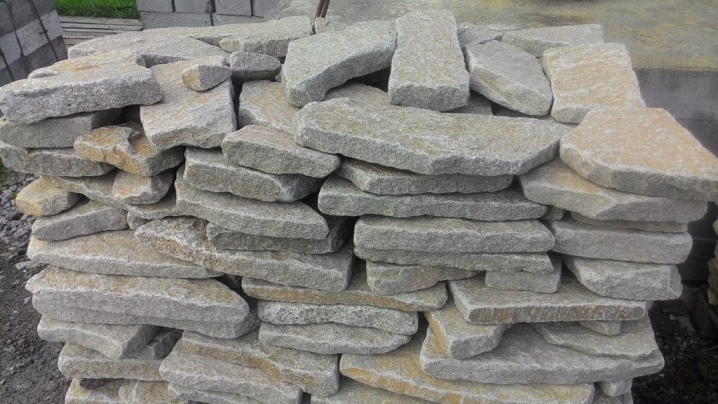
Light varieties (and beige, and red, and yellow) are distinguished by minimal strength. They are used mainly in vertical planes and retaining walls.
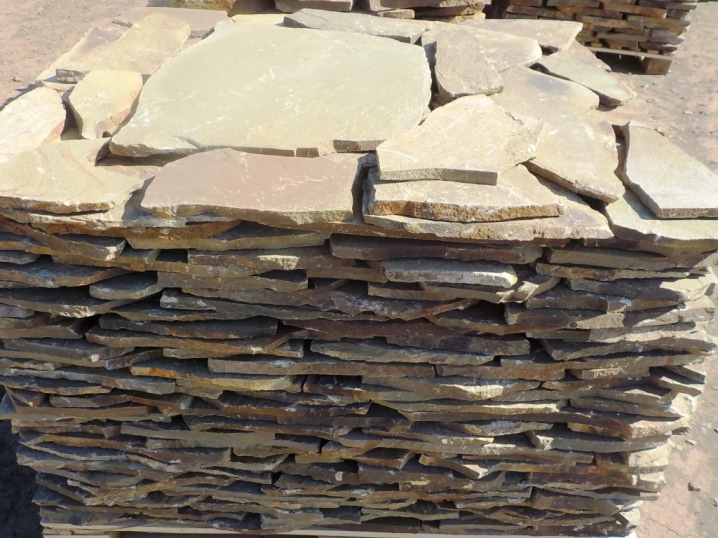
Such material is sometimes taken for paving. But it is desirable to increase the layer thickness by at least 10-20 mm compared to gray stone for a similar task. And at the entrances of trucks, it is not at all advisable to use light flagstone.
Another subtlety is taking into account the main defects of the limestone that reduce its quality:
-
limestone inclusions;
-
the appearance of rust;
-
highlighting layers in depth;
-
looseness;
-
too pronounced relief (but this is a problem only with horizontal laying, and on verticals, on the contrary, it is a dignity).
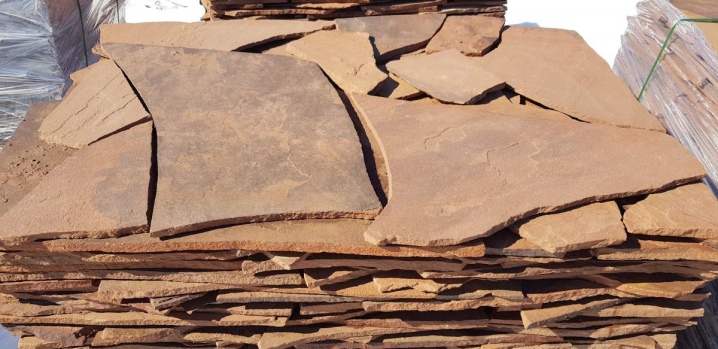
Examples of use in landscape design
With the help of limestone, you can lay out flower beds around the perimeter, decorated by themselves with white and red granite. It is clearly seen that this is not such a bad decision.
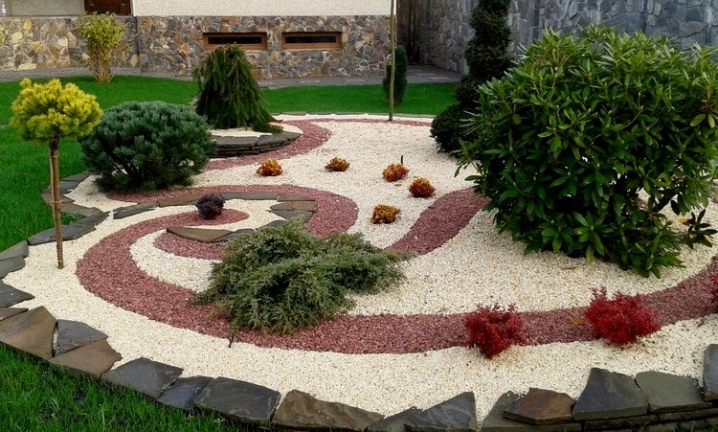
But it can be decorated with a limestone and a flowerbed, divided into original sectors. It may look no worse. It's okay to even use a simple gray stone..
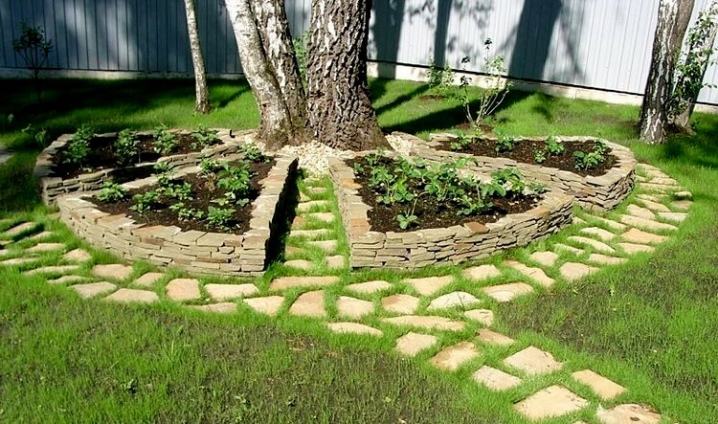
This is how a platform decorated with slab material looks like. Fragments of different colors and shapes make it possible to create an original effect.
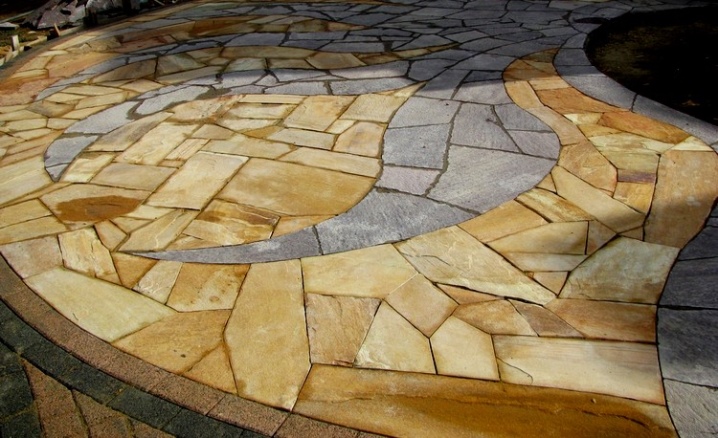
And this is how the combined solution is perceived - where there is both a platform and slab stone paths.
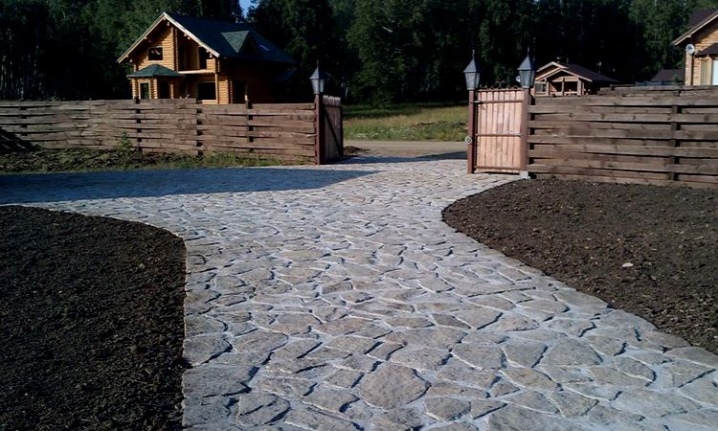
The possibilities of using limestone in rockeries are great. Against the backdrop of a dazzling white backing, these designs look good.
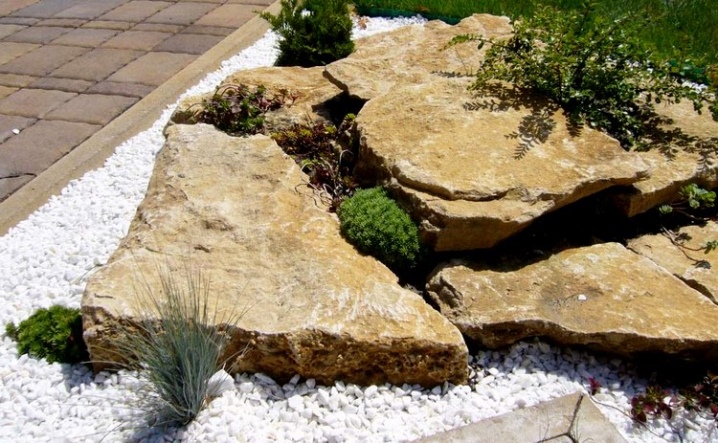
This is how a large retaining curb looks like - and a great height can only be called its advantage. The stony bedding in the meadow and the paved path combine very well with the wall. In general, the design in such an environment is perceived excellently.
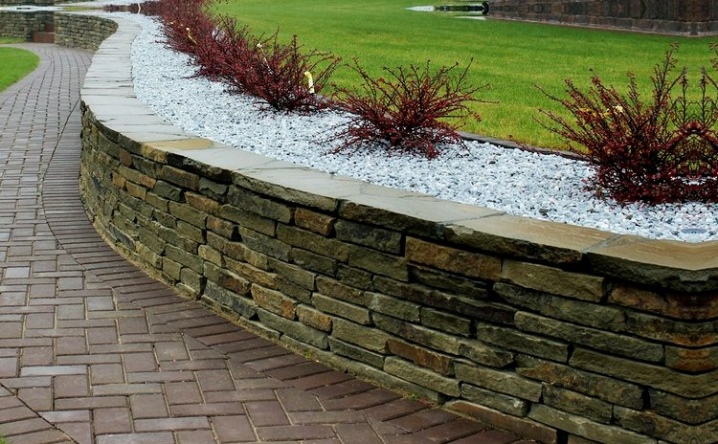
It should be noted that limestone fences are very popular... The photo shows one of these multi-colored structures with a pronounced relief. Although the colors are discreet, they look amazing together. The metal caps on the pillars fit elegantly into the composition. But there may be some other options, of course.
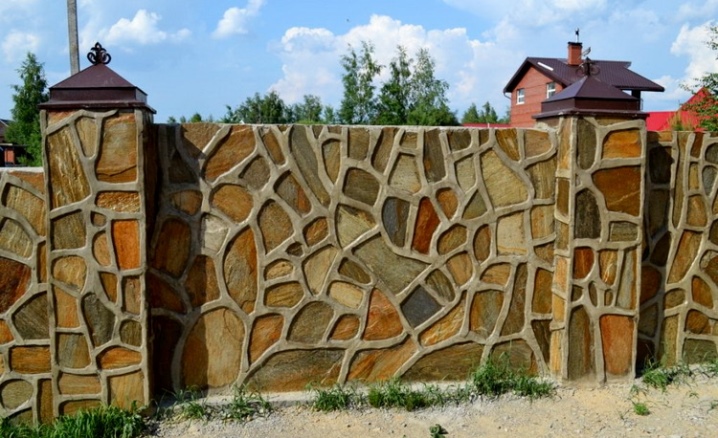
For example, this is how a slab alpine slide might look like. A stone slab, seemingly inexpressive in itself, is perfectly perceived against the background of a bulk stone mass. It is also immediately evident that the plants were picked with great taste.
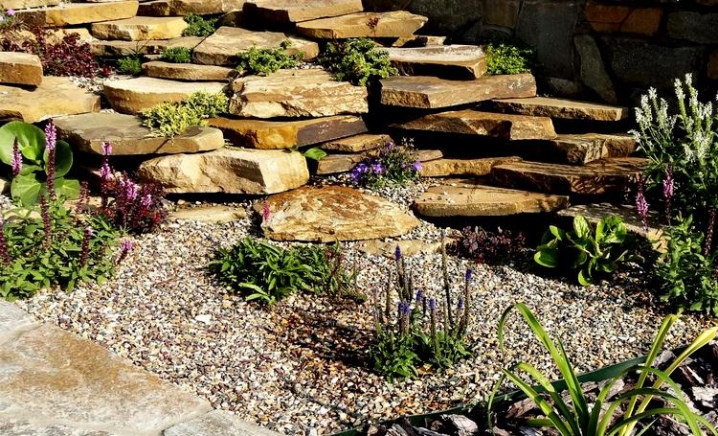
Finally, an attractive waterfall can be created on the basis of limestone. One of these solutions is shown in the picture below.

For more information on the use of limestone, see the video below.






The comment was sent successfully.